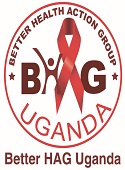Sexual And Reproductive Health And Rights (SRHR)

In Uganda, the Ministry of Health (MoH) estimates that there were 1,192,372 people living with HIV, 124,261 persons newly infected with HIV and 64,016 AIDS deaths as of December 2009 (Estimation and Projection... Read More
IntroductionThirty years since the first case of AIDS was described in 1981 (Gottlieb et. al., 1981), HIV continues to pose the greatest public health and socioeconomic challenge to mankind threatening the attainment of the Millennium Development Goals (MDG's). Despite significant breakthroughs in prevention, treatment and care, the HIV epidemic continues unabated especially in sub-Saharan Africa. According to the latest UNAIDS Report, AIDS at 30: Nations at the crossroads, some 34 million people are living with the HIV virus globally and nearly the same number has died since the first case was reported in 1981 (UNAIDS, 2011).
In Uganda, the Ministry of Health (MoH) estimates that there were 1,192,372 people living with HIV, 124,261 persons newly infected with HIV and 64,016 AIDS deaths as of December 2009 (Estimation and Projection Package (EPP) and Spectrum).
These estimates point to difficulties in Uganda’s national HIV and AIDS response that had initially been very successful in stemming the HIV/AIDS epidemic resulting in a marked decline in HIV prevalence from a national average of 18% in 1992 to 6.2% in 2002. Thus, since then the HIV response has been characterized by challenges which have led to a stagnation of the epidemic. Coverage of prevention interventions remains low due to inadequacies in the health system and despite expanded access to antiretroviral therapy (ART), a major treatment gap remains. It is estimated that 570,000 PHA are currently eligible for anti-retro viral treatment under the new eligibility Treatment Guidelines (of CD4 count of <350), but only about 290,000 (50%) are receiving this treatment according to Uganda AIDS Commission (UAC). Furthermore, the resources to finance the response are dwindling partly due to the global economic crisis, which calls for mobilization and harnessing of local resources to respond to HIV/AIDS.
Situation Analysis of HIV in Uganda
Since 1993, Uganda has succeeded in lowering its very high HIV infection rates. Among pregnant women, a key indicator of the progress of the epidemic, the rates have been more than halved in some areas and dropped by over a third among men seeking treatment for STI's. Subsequently, the annual rate of new HIV infections stabilized, leading to a stable adult HIV prevalence of 6-7% in the past 10 years (Spectrum estimates).
Despite this success, there are serious concerns due to the fact that overall, HIV incidence increased from 115,775 in 2007/08 to 124,261 during 2009/2010 based on mathematical models ran by MoH, using EPP and Spectrum. Concerns are now being raised about the amount of attention (leadership, funds, and systems) committed to proven prevention and treatment interventions. Drivers of the HIV epidemic include the structural, contextual and social factors, such as poverty, gender inequality, inequity and poor access to health care, as well as stigma and discrimination and other human rights violations. Like elsewhere, Uganda‘s response is expected to utilize the game changing scientific advances, scale-up out interventions to realize universal access target for services.
Trends in HIV incidence 2007–2010 using mathematical modeling.
Situation Analysis of SRHR
Sexual and Reproductive Health and HIV/AIDS are twin public health concerns in Uganda today. Poor SRHR is evident in mostly adolescents and women with experiences and cases such as; early sexual debut (especially among girls i.e. median age of 15-16), forced and early marriages, multiple sexual partners, cross generational and transactional sex, sexual coercion, female genital mutilation (FGM), early pregnancy, abortion, poor contraceptive knowledge and use, unmet need for contraception and inappropriate condom use and consistency.
Our Interventions
We have rolled out to different communities in to contribute to reduction of the now increasing HIV/AIDS incidence rates. HIV Counseling and Testing has been at the center of our interventions towards these public health issues. A number of people have been sensitized on comprehensive HIV and AIDS services including prevention, treatment, care and support, referral as well as condom programming. Others include; peer education, capacity building (training on HIV and AIDS to the in and out of school populations), massive community sensitization including house-to-house programs, holding community FGD's, giving life skills, sharing testimonies, in and out of school debates on HIV and AIDS,


